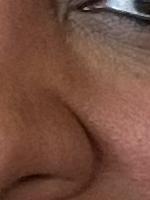
Research papers are a pairing of two 18 minute presentations followed by 18 minutes of Discussion led by a Discussant, with remaining time for Q & A.
This is presentation 2 of 2, scroll down to see more details.
Other presentations in this group:

Technology and the internet have long been heralded as a democratizing force, but even though many schools now have equal access to technology, students experience vastly different realities — what Hansen and Reich (2015) refer to as a rising tide of opportunity. Although the premise is that increased access to freely-available digital learning tools will create new possibilities — essentially closing gaps in education outcomes — the reality is that these opportunities largely benefit more affluent communities. The 2017 National Education Technology Plan describes this as the digital use divide: “The disparity between students who use technology to create, design, build, explore, and collaborate and those who simply use technology to consume media passively” (Office of Educational Technology, 2017, p. 20).
As such, we chose Bandura’s (1986) theory of triadic reciprocal determinism as a framework. Within this social cognitive theory, an interdependence exists between the stimuli provided by the environment, the personal cognitive factors of the individuals, and the behaviors that individuals thus perform (Bandura, 1986). In the context of this study, the environment refers to the entire learning ecosystem influenced by the new creative tools provided to students and teachers. Cognition includes the educators’ as well as the students’ perceptions and beliefs about creativity; and the behaviors describe the intended classroom practices that lead to experiences that foster student creativity.
The research team intends to employ a convergent, mixed-methods design where quantitative and qualitative data will be collected concurrently and then triangulated (Creswell & Plano Clark, 2017). Measurement instruments include teacher and student surveys as well as a creativity experience rubric. A component of this study is the design and testing of these three instruments. Qualitative data will be collected through focus groups and interviews with participating teachers to gain a deeper understanding of their reality in context.
The participants are currently being purposively selected. The research team is selecting districts that serve a diverse student body and who have already made some investment in creativity tools. Once a district has joined, teachers from grades 6-12 can choose to participate in the professional learning and associated research.
At this time, the study is ongoing. All survey instruments will be openly-available and include documentation such that the study can be replicated by school or district-level teams.
This study is currently underway. However, preliminary quantitative analysis of the data from the pilot of the first measurement instrument - the teacher creativity survey - has resulted in a number of observations. First, we noted a difference between teachers’ perceptions and their reported behaviors. For example, teachers strongly agree that it is important for students to think creatively but do not indicate that they demonstrate behaviors that would foster that creativity with as much regularity.
Next, we specifically analyzed the data of participants who indicated that over 81% of their students qualify for FRPM services. Within this sample, 64% have 11+ years of teaching experience, 23% reside in rural areas, and 56% teach in urban settings. When compared to other participants with lower percentages of students qualifying for FRPM, this sample had the highest mean score (M=2.88, SD=0.893) on the question asking whether their leaders provided them with professional learning to design classroom experiences that foster student creativity (Table 3). Notably, they also had the highest average score (M=3.38, SD=0.694) when asked to rate their comfort with technology (Table 4).
Finally, in our analysis of the survey items pertaining to perceptions and behaviors around creativity, we observed two notable trends. Across the 18 questions asking about teachers' perceptions, the 81+% FRPM sample had the lowest mean scores on 50% of the items. In contrast, the 81+% FRPM sample had the highest mean scores on nine of 19 items asking about their practices to encourage student creativity. Additional analysis will further explore these trends and subsequent phases of the study will answer the research questions.
Over the next two years, this research program intends to examine the effects of providing educators with access to high-quality professional learning and multimedia tools with the intent of increasing student access to creative learning experiences. Unlike traditional studies, every measurement tool, all of the results, as well as the instructional strategies surfaced during the qualitative strand will all be made freely and openly available via the nonprofit partner. In alignment with the conference theme, this project will occur in partnership with the field and use multiple modes for communicating findings to the field.
Berry, B. et al. (2008). Creating and Sustaining Urban Teacher Residencies: A New Way to Recruit Prepare, Develop, and Retain Effective Teachers in High-Needs Districts. The Aspen Institute; Center for Teaching Quality. https://www.aspeninstitute.org/ publications/creating-sustainingurban-teacher-residencies-new-way
Coman, A. N., & Patterson, R. (2014). Teacher Residencies: Redefining Preparation Through Partnerships. Washington, DC: National Education Association.
Creswell, J. W., & Clark, V. L. P. (2017). Designing and conducting mixed methods research. Sage publications.
Guha, R., Hyler, M.E., & Darling- Hammond, L. (2016). The Teacher Residency: An Innovative model for Preparing Teachers. Palo Alto, CA: Learning Policy Institute.
Klein, E. J., Taylor, M., Onore, C., Strom, K., & Abrams, L. (2013). Finding a third space in teacher education: Creating an urban teacher residency. Teaching Education, 24(1), 27-57.
Miles, M. B., Huberman, A. M., & Saldaña, J. (2018). Qualitative data analysis: A methods sourcebook. Sage publications.
Modan, N. (2022). Cardona urges state, district momentum on teacher shortages. K-12 Dive. https://www.k12dive.com/news/cardona-urges-state-district-momentum-on-teacher-shortages/621092
National Center for Teacher Residencies. (2022). Impact & Results. https://nctresidencies.org/nctr-network/impact-results/
Wells, C., DeMoss, K., Mansukhani, D., & Paull, Z. (2021). Five Domains for Teacher Preparation Transformation. New York: Prepared To Teach, Bank Street College of Education.